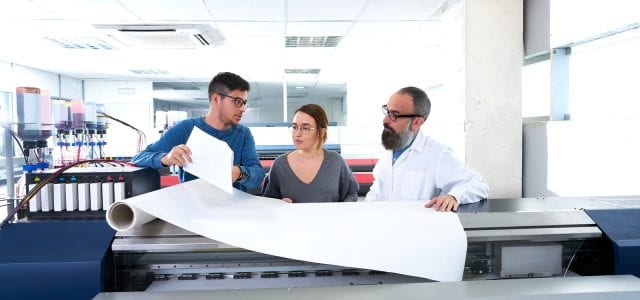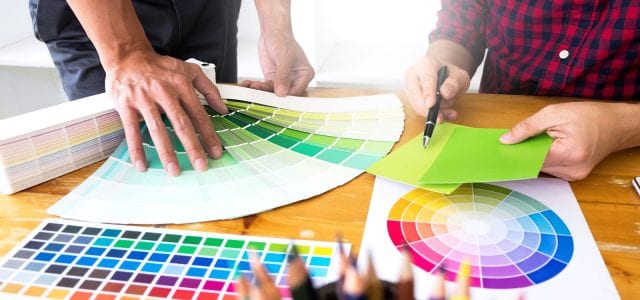Printing has been around for far longer than modern printers. There have been many different styles used and adapted throughout history, and most can still be found in use today. Some forms of printing are better suited for particular projects than others. Quantity, quality, and printed materials are all factors in what method is used. Let’s unpack a few different options and look at what applications they could be used for.
1.
Wood Block
One of the first forms of printing consisted of wood block printing. This method consisted of using carved wooden blocks and ink to leave reliably consistent images, letters, and numbers on various surfaces. Some blocks have a complete message carved into them, while others use individual letter blocks to spell out any customized script desired. Because of how long this can take, it’s not a widely used printing method commercially.
2.
Offset Printing
Offset printing utilizes individual plates for each color of a print. If a print uses 8 different colors this kind of printing process requires 8 different plates. We’ve covered offset printing before, but the gist is that each plate needs to be specially etched for each color. This is a time consuming process and potentially expensive. However, when used to make many hundreds of copies of something, this method is actually pretty cost efficient.
3.
Flexography
This form of printing utilizes rubber relief plates instead of metal. This is usually found in relation to printing services that print on non-porous surfaces. These kinds of surfaces are on things like coffee mugs, plastic signs, and glass. Because the surface isn’t porous, the ink needs to dry quickly on the surface of the object, so these inks are usually water based.
4.
Inkjet Printing
When printing at home, this is the most common kind of method. Most home printers utilize inkjet, which uses a CMYK process and an array of inks to generate color. These inks are stored within cartridges inside of the printer and individually apply color according to instructions from a computer. This is great for single run prints that can be of varying quality. For higher count runs however, this form of printing is too costly.
5.
Digital Printing
Instead of using ink, digital printing uses toner. Toner does not sink into the surfaces it’s printed on like ink. Instead it sits on top. The quick change ability that comes from not using plates means that this kind of printing is very versatile and lower cost. Unfortunately, it’s hard to meet the same quality standard that offset printing can produce.
6.
Silkscreen Printing
This form of printing is more involved than some others. This method is commonly used for fabric, t-shirts, and promotional items. Using a stencil and photo emulsion chemicals, images of varying colors can be applied. This is a method that can be used at home for small runs or professionally for larger projects.
7.
Engraving
This form of printing is expensive and takes a long time. The process uses engraved plates and ink, resulting in a raised image and a specific aesthetic of a multilevel image. This look is highly unique and difficult to accurately recreate. When attempts are made and not successful they can come off looking cheap. This kind of printing usually comes into play for high end invitations or next level business cards that want to go that extra mile.
8.
Movable Type
The movable type was developed to make the first replicated books using a large machine where individual letters can be placed on a large scale. These letters could be of varying material, usually wood, sometimes metal. This made it possible to make books and prints quickly, or at least more quickly than doing each by hand. This kind of printing is less popular now, as there are far faster ways of mass producing printed materials nowadays.
Which Is Right For You?
These are just a few of the many many methods of printing. For each project, there may be different methods of printing that are appropriate. Depending on the look you’re going for, the quantity of the prints, and the kind of material you’re printing on, you could use a few different styles.
Professional printing services know which ones are most effective at getting the exact look you’re hoping for. By going through an experienced service, you don’t necessarily need to know the ins and outs of every process. They do!






very interesting , good info and thanks for sharing such a good blog.visit website for latest label printing service and business cards service….